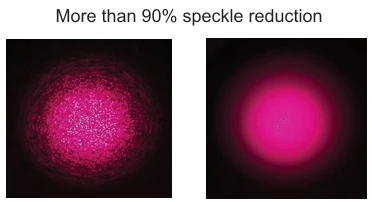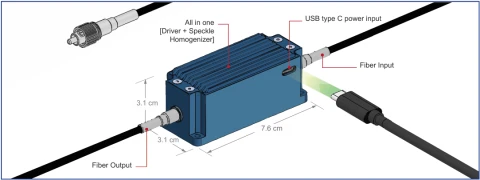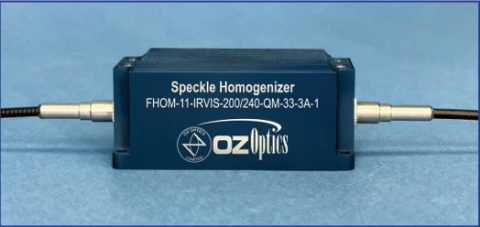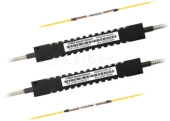Description
The Speckle Homogenizer is an advanced optical device specifically designed to enhance the performance of multimode fiber laser systems by significantly reducing speckle noise. This innovative tool is engineered to deliver over 90% speckle contrast reduction, ensuring superior imaging quality and system reliability. Its compact, all-in-one design integrates both the optics and driving electronics within a single enclosure, making it an ideal choice for optical engineers and system designers who require seamless integration and high efficiency. The device's plug-and-play nature allows for straightforward installation, eliminating the complexities often associated with system integration. This feature makes it particularly appealing for those seeking to maximize the potential of multimode fiber imaging technology. The Speckle Homogenizer supports a wide range of wavelengths and optical power levels, offering unmatched versatility across various applications. Its low power consumption and USB type C power input further enhance its appeal, ensuring that it meets the needs of both OEM integration and laboratory use. With its robust design and high-performance capabilities, the Speckle Homogenizer is the go-to solution for reducing speckle noise in fiber-delivered laser systems. Whether used in medical endoscopic imaging, bioanalytical instrumentation, or machine vision, this device provides the reliability and efficiency needed to achieve high-quality results. Its compact enclosure and advanced features make it a valuable addition to any optical system, providing a significant boost in performance and imaging quality.
In-Line Multimode Fiber Speckle Homogenizer with USB-C Power Input
Specifications
| Wavelength: | 400 – 1550 nm |
|---|---|
| Wavelength: | 400 nm – 1550 nm |
| Fiber Core Size: | 100 µm – 400 µm |
| Fiber Core Type: | Round, Square, Hexagonal |
| Power Input: | Standard USB port |
Features
- Over 90% Speckle Contrast Reduction: Achieve superior imaging quality by significantly reducing speckle noise in multimode fiber laser systems.
- In-Line Fiber Device: Experience zero optical loss with our seamless in-line integration.
- Plug-and-Play Integration: Simplify installation with our easy-to-use design that requires no additional setup.
- Supports a Wide Range of Wavelengths and Optical Power Levels: Versatile compatibility for various applications.
- Low Power Consumption: Efficient operation with minimal energy usage.
- USB Type C Power Input: Convenient and modern power input for universal compatibility.
- Compact Enclosure: Ideal for OEM integration and laboratory use, offering flexibility and ease of use.
Applications
- Medical endoscopic and optical coherence imaging
- Flow cytometry and DNA sequencing
- Interferometry and fluorescence microscopy
- Bioanalytical instrumentation
- Machine vision and laser projection
- Speckle reduction in fiber-delivered laser systems
Frequently Asked Questions
What is the main function of the Speckle Homogenizer?
How much speckle contrast reduction does the device provide?
What are the power input requirements for the Speckle Homogenizer?
Can the Speckle Homogenizer be used with different fiber core sizes?
What applications is the Speckle Homogenizer suitable for?
What is the typical wavelength range supported by the Speckle Homogenizer?
Is the Speckle Homogenizer easy to integrate into existing systems?
Similar Products
Your inquiry has been received.
Create an account by adding a password
Why create an account?
- Auto-complete inquiry forms
- View and manage all your past messages
- Save products to your favorites
- Close your account anytime — no hassle




